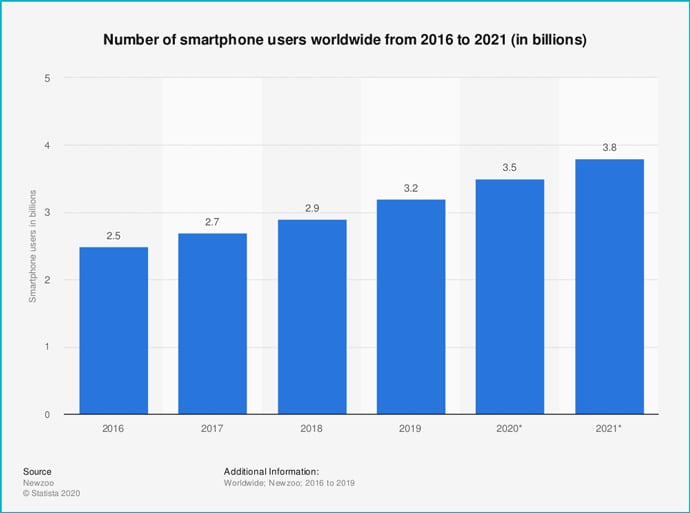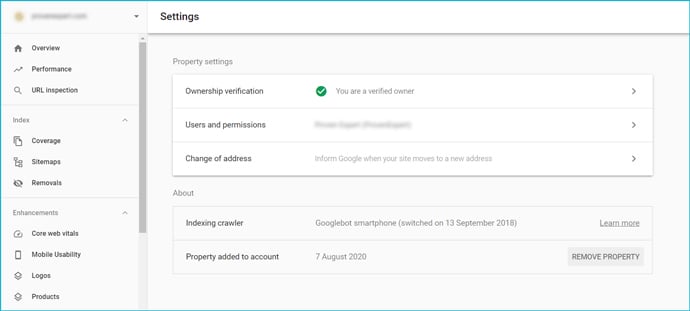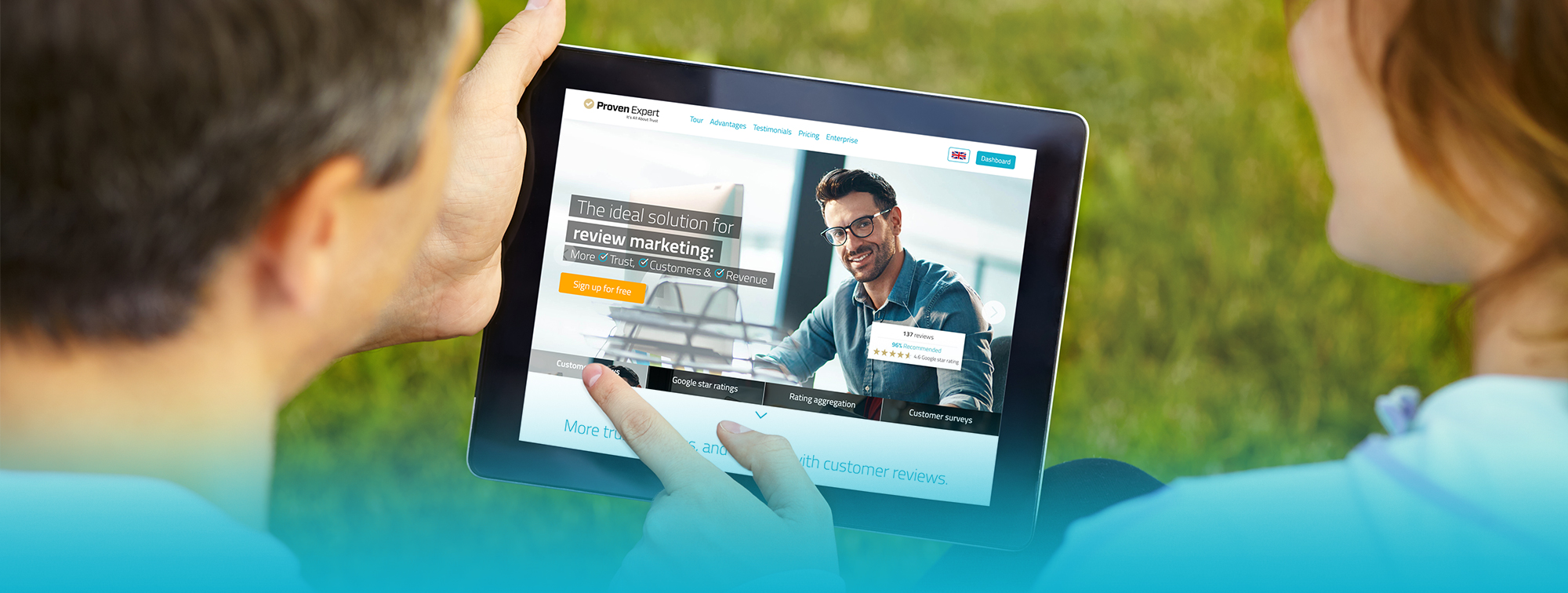In the future it’s “mobile first”!
Last updated: April 5, 2023No more desktop crawls, as of March the mobile Googlebot will be the new standard
When was the last time you actually reworked your website? If you regularly update your website, you don't need to fear Google's process changeover next spring. But what will SEO managers, online agencies and webmasters have to be aware of when Google starts taking only the Mobile First Index into account for its ranking of websites as of March 2021?
No more desktop crawls, the new standard is called Mobile First Indexing - if the website is not responsive and meets all the criteria for mobile presentation, it will be lowered in the ranking in future or no longer taken into account.
Desktop vs. Mobile – or simply responsive?
Google has been preaching the advantages of a responsive web design for years, where the presentation of the website itself is adapted and aligned to the screen size of the end device. Perhaps some of you still remember the days when your smartphone asked you whether you wanted to switch to the mobile view or stay on the desktop view of a website. This question has not been asked for years, but what if your website hasn't been updated for years? If you are currently using a mobile and desktop-optimized version of your own website, you don't have to switch to a responsive design within the next 6 months. Google will still support the separate mobile domains and take them into account for the ranking. However, it can't hurt to think about a change in the future. Not only will you be better positioned in the SEO area, you will also no longer have to worry about managing two domains.
Next March, Google will make a significant change in the crawling or indexing process. While in the past, websites were checked for their desktop presentation and later also for their mobile presentation, from now on only the mobile version of each website will be inspected. Those who do not have a mobile-optimized website will no longer be considered in the search engine's ranking process from March 2021. If your company site is currently still listed on the first three search result pages, it can quickly slip to the bottom of the list after the process changeover. Reason: If the Smartphone Googlebot does not consider your website to be mobile optimized, that is if not all information is available as shown in the desktop version or if the page takes too long to load, it will not be considered in the ranking.

What is indexing?
Indexing describes the integration of information into an index. According to certain pre-defined criteria and factors, the included contents are prepared for the index. The index, in turn, makes the information easy to find - whether on the web or in an archive or library, for example.
The easiest way to imagine this is to look at Google itself. If you enter a word in the search box, Google does not search the entire World Wide Web, but starts a search in its own index. But how do Google and other search engines create their indexes? They use crawling, which involves the use of special software that works like a robot - hence the term Googlebot. The robot moves through the net autonomously, examines pages and then includes them in the index. The contents are sorted and an algorithm defines a hierarchy.
This is where the ranking of your own website in the Google search engine results comes into play. Of course, the various data sets and indexes have different hierarchies, but they always have a direct impact on the ranking in the search engine. Up to now, desktop and mobile Googlebots have been in use, but from March 2021 onwards, only and exclusively Mobile First indexing will apply.
Stay informed about important topics concerning online marketing and online reputation!
The Google optimization affects everyone
For a long time Google has been pursuing the goal of making all the information available worldwide accessible to users with just one click. Mobile devices, such as smartphones and tablets, have additionally fuelled this goal. But to make this mission a success, information and data is needed that the search engine can measure and evaluate according to the ranking factors and its algorithm. There are now 3.5 billion smartphone users in the world and the numbers are constantly rising.
Google holds over 70 % of the search engine market share worldwide. Most searches take place on mobile devices, in June 2019 they accounted for over 50 % of all searched for the first time. The conversion to the Mobile First Index is therefore essential for the success of a company. If a company is not found online, it is not available to customers and potential customers.
Mobile devices shape everyday life
The trend towards mobile devices has been apparent for a long time, so the assumption that users want a website adapted for their smartphone or tablet is obvious. Constant searching and zooming in on small screens is more than hindering. If the mobile website takes more than a few seconds to load and build up, the user is annoyed and tries their luck on other sites. The user experience must come first. For this reason, Google announced as early as 2016 that it would be using a Googlebot to crawl websites in the future, focusing on the mobile optimization of a particular website. The first process changes have been implemented since 2018. Google already crawls certain websites exclusively with the Mobile Googlebot, as they fulfill all the properties and standards for the Mobile First Index, or MFI for short. According to Google, 70 % of all websites are now crawling with the mobile user agent. However, 30 % are still crawled with the desktop Googlebot and evaluated for ranking purposes, which will finally end in March 2021. If the user does not have the same options as on the desktop version, the pages will no longer be ranked and thus fall significantly behind in the ranking of the search results.
The user should be able to access the information they are looking for immediately with just one click. Today, most people use a smartphone or tablet for this purpose. As of 2019, more than 53 % of the global search engine traffic comes from mobile devices, so what must the remaining 30 % of website operators do now?
Your own website and the Mobile First Index
No need to panic, there is still enough time to prepare for the process transition. First of all, it is important to check whether your site is not already adjusted to the Googlebot and thus to Mobile First Index. Since 2018, Google has specifically switched websites that already meet all requirements for mobile-optimized websites to the Mobile First Index. This means that Google now views the pages from the perspective of a smartphone user and no longer as pure desktop pages. You can check whether your own website has been converted in the Google Search Console. To do so, simply open the page. Under the item "Settings" in the left menu bar you can see whether and since when Google crawls the page with the Mobile Googlebot.

If Indexing Crawler says "Googlebot for Smartphone (changed on ...)", you can sit back and relax, because there is no need for action. Your site is one of the sites that Google has been crawling from a mobile perspective since September 2018. And the changeover date reveals even more. In retrospect, traffic data and rankings can be viewed and evaluated under completely new aspects. However, if the Googlebot is not yet at work, there are settings that should be made before the official process change in March 2021. The best way to do this is to contact your webmaster or contact a SEO or online agency that will support you in implementing the requirements. In general, all pages of your website must be connected to the Google Search Console to check the indexing status. Differences between the mobile and desktop versions of your site should be avoided. How long does the page take to load on mobile? Long loading times discourage users and lead to dropouts. The best way to test your mobile site in advance is to use pages like Test My Site. The metadata should also be identical for both versions. Google does reward new information, but in this case, you should aim for consistency. A detailed and deeper insight into the requirements for Google's "Mobile First" is provided by Google on the Best Practice page.
The following checklist will help you to face the transition with confidence:
Checklist for the transition to Mobile First Index
- Clarify in advance whether your own website is responsive - whether it adjusts itself according to the screen size of the end device or whether it still needs to be adapted. The page is responsive or there is a mobile domain? Great - check on Google Search Console to see if it has already been switched to Mobile First Index!
- Same content on mobile and desktop - some rely on different content in the desktop and mobile versions, so you can find longer content on the desktop-optimized page, these are not displayed for mobile, but are "hidden" within other tabs at first sight. In the future, this content will not be considered for the ranking of the page. Hence the advice: Display the content on all pages equally and make it available.
- Keep an eye on your brand, look for matches in meta-data, titles, descriptions as well as images, videos and links. Only if everything fits together and is communicated to the outside world in a consistent manner can you avoid irritation and confusion among customers, prospects and the search engine.
- Optimize mobile loading time. Since an update in 2018, mobile loading speed has been a ranking factor at Google. Google offers the possibility for a direct check, visit the Google Page Speed Insights and test your page.
Everything in the clear? Let the "Mobile First" future begin.
Convince visitors not only with an optimized website, but also with your customers' positive reviews!
